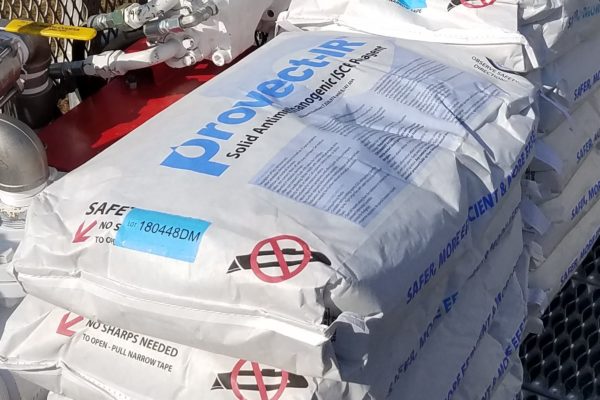Controlling Methane Production during ERD and ISCR Remedial Actions
RemTEC Summit 2015 | March 2-4, 2015 | Westminster, CO
By Jim Mueller (Provectus Environmental Products, Inc.), Mike Scalzi, Antonis Karachalios (Innovative Environmental Technology, Inc.), Larry Kinsman (ORIN Environmental, Inc.) and James Peale (Maul Foster, Inc).
A wide range of organic substrates can be fermented by indigenous aquifer microbes and specialty inoculants to yield hydrogen which, during remedial actions, is intended for use by dechlorinating microorganisms to enhance reductive dechlorination reactions. However, hydrogen is also used by methanogenic bacteria that convert it to methane. At many sites, the resident methanogens often bloom following the addition of the organic hydrogen donor thereby liberating large amounts of methane gas. There are at least three important consequences of this response:
- By utilizing hydrogen, the methanogens compete with dechlorinating microbes thus making inefficient use of the remedial amendment;
- Rapid growth of methanogens consumes alkalinity while generating acids thereby having the potential for aquifer acidification (which may liberate heavy metals causing secondary contaminant issues); and
- Elevated methane concentrations can exceed current and pending regulations of < 10 to <28 ppm in groundwater and/or 0.5% v/v methane in soil gas (g., 10% of the LEL) and/or indoor air regulations (methane is flammable between 5 and 15% v/v)
We describe herein the use of a specially modified red yeast rice extract (RYR) as an inhibitor of enzyme systems that are responsible for the production of methane (US Patent 14268637; PCT/US14/36632). The modified RYR contains several ingredients that uniquely inhibit methane production, including a number of natural monacolins (most importantly monacolin K, or lovastatin). Monacolin K has the unique ability to block enzyme systems specific to methane production. The technology has been widely used for many years in the cattle industry to manage rumen microbiology, but is being newly applied to the environmental industry as a remedial supplement, a landfill gas management tool, etc.
Data from laboratory and field studies will be presented to demonstrate effective antimethanogenic activity of the supplement during remedial actions, and when used to mitigate excessive methane generation following the addition of conventional hydrogen donors (e.g., EVO) and ISCR reagents (e.g., EHC). For example, when applied at ca. 40 mg/L the RYR reduced the concentation of methane in biogass from 65% to 0% within 5 days without changing pH and maintaining reducing conditions < -300 mV. When applied at 50 mg/L in the field the modified RYR antimethanogenic supplement costs between $0.10 to $0.15 per ft3 of groundwater treated, which is a fraction of the typical organic amendment costs.
CONTACT :
Dr. Jim Mueller – Provectus Environmental Products | Email: [email protected]

